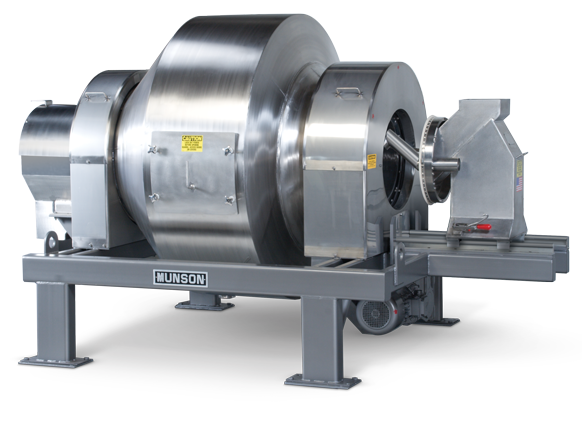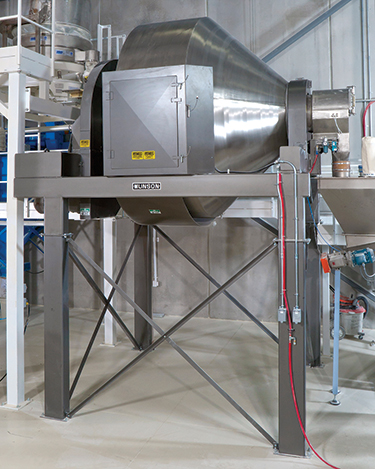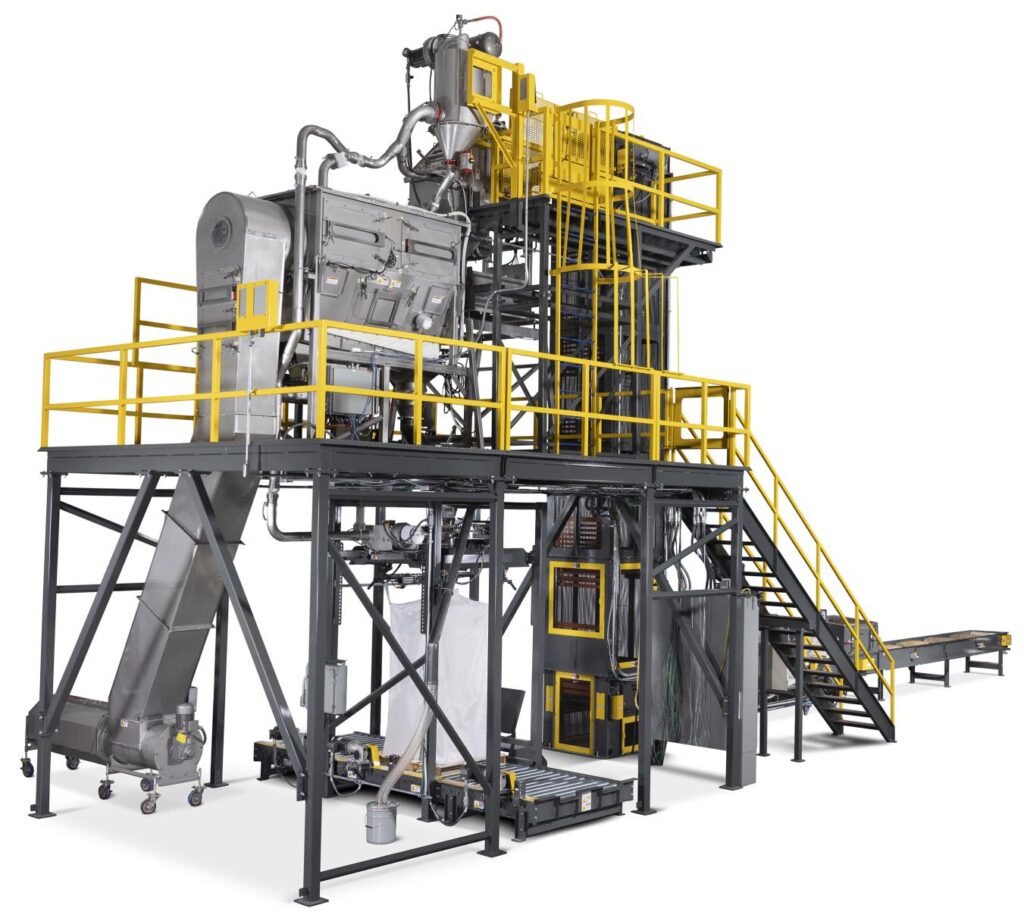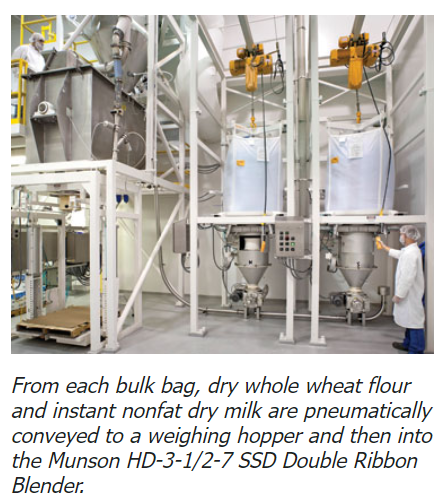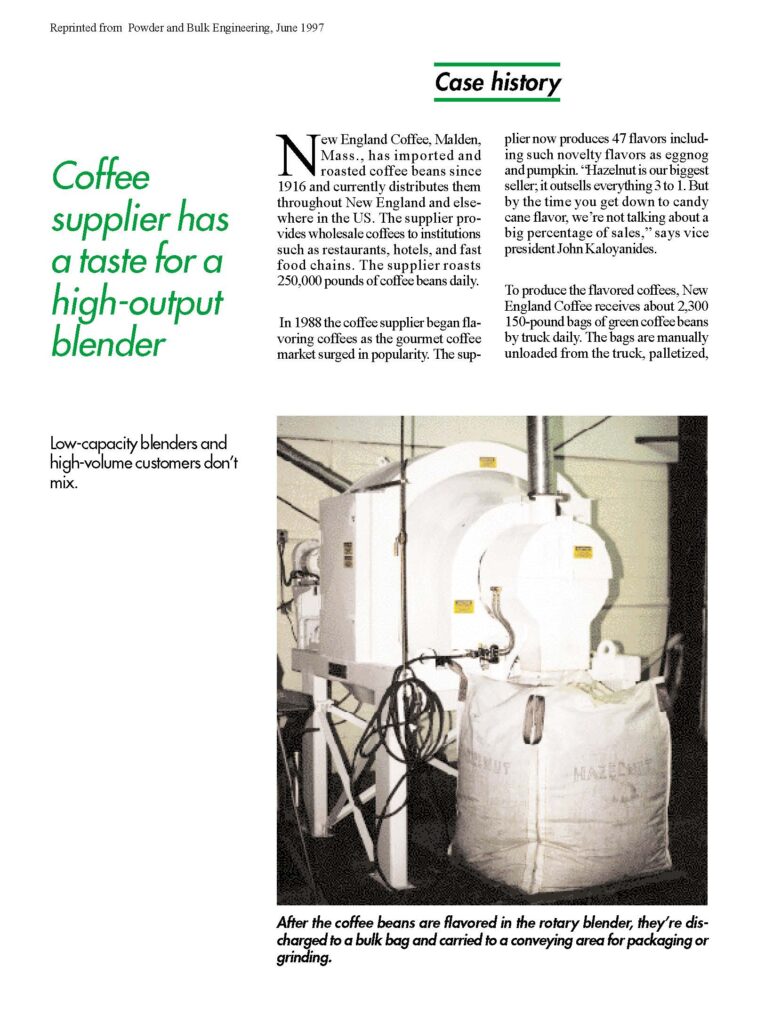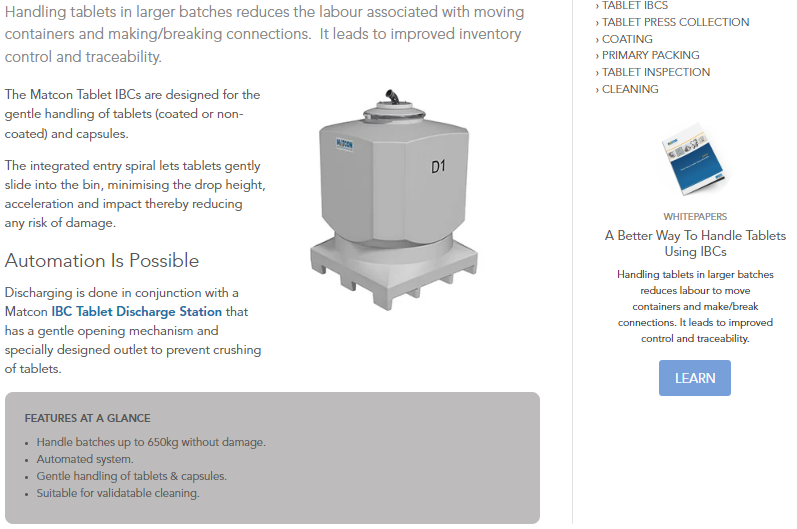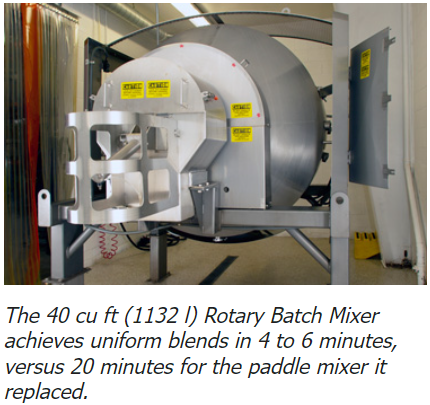Cinnamon Plant Employs Screen Classifying Cutter and Rotary Mixer
From the conveyor line the quills are discharged into a rotary knife cutter and rough-cut to a maximum length of 6 in. (15 cm). The quills are then fed via a pneumatic conveyor into a high-speed, screen classifying cutter (Munson model SCC-15-MS). The unit’s horizontal rotor contains dozens of cutter blades, attached to a helical array of staggered holders called “interconnected parallelograms.” The blades are chisel-shaped, with replaceable carbon tips.
Driven by a 20-hp (15-kW) motor, the blades rotate at 2,200 rpm and continuously shear the quills against twin, stationary bed knives, cutting them into 2 in. (5 cm) lengths. Despite the high rotation speed, there is little to no heat generation and minimum fines
Cinnamon Plant Employs Screen Classifying Cutter and Rotary Mixer Read More »

